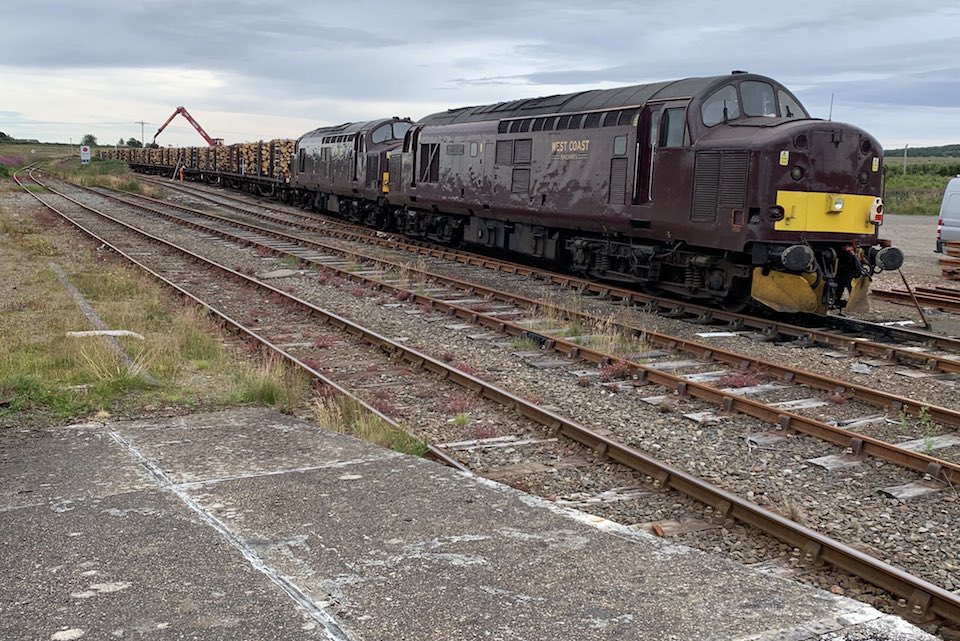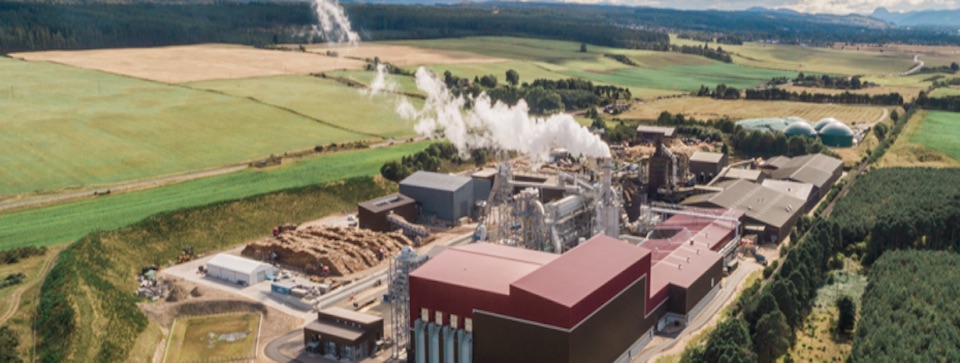Opening of Scottish station brings timber traffic several steps closer

The opening of a new railway station in the Scottish Highlands could open the door to new rail freight timber traffic. Improved infrastructure, installed to support the opening of Dalcross Inverness Airport station, has helped put the prospect of timber by rail on the agenda at West Fraser, the new owners of Norbord, a nearby timber processing and manufacturing plant. The company has previously been a partner in trial movements of raw timber from sources in the far north of Scotland.
Canadian timber company West Fraser recently bought out Norbord, an Inverness-based processor of naturally sourced building materials. The company has been reviewing its logistics chain and has reiterated its exploration of rail-based forwarding. Unusually for rail freight interests, the opening of the new passenger station nearby the company’s Dalcross plant could provide a convenient platform for new rail freight operations.
Far North Line timber trials
Trials involving timber movements have been a feature of Scottish railway operations for almost two years. Now, with the opening of a passenger station nearby a timber plant, the likelihood is growing of more regular traffic. In 2021, the Dalcross processing plant of Norbord was the destination for raw harvested timber resources conveyed by rail from Altnabreac, a tiny outpost of the network, on the way to Wick and Thurso, the most northerly passenger terminals in the UK.

Now, with Norbord becoming part of the larger Canadian operator West Fraser, the Scottish operation is positively reviewing its relationship with rail freight. The opening of the passenger station at Dalcross, and additional rail infrastructure installed, offers the potential for the company to further its own sustainability agenda. The hope is that the trials which involved a ‘last mile’ by road operation from Inverness (more like a last seventeen-mile transfer), could come all the way to the doorstep of the plant by rail.
Adjacent to railway line
“Achieving net carbon negative status for the products is not the end of the company’s environmental journey”, explained the company’s Steve Roebuck. “West Fraser, and formerly Norbord, has always been committed to reducing the impact of our operation on the environment. At the moment, virtually all of the OSB [oriented strand board] manufactured in the Inverness plant goes out by road, but right now we are in a capital process with Network Rail. We’ve run trials and are in the process of building the capital infrastructure to be able to switch to rail. That will have a massive impact on transport emissions. By switching from road to rail we estimate that we will make a saving of around 9,000 tonnes of Co2 a year.”

The broader adoption of timber by rail has been a matter of some effort in Britain. The trials in Scotland resulted in approval being granted from a local authority to establish a new terminal in the north of the country, on the site of the modest facility on the Far North Line – the single-track ribbon which connects the principal settlement of Inverness with the towns of Thurso and Wick. Further timber operations in Wales have encouraged the rail freight industry that there may be a renaissance in the sector sprouting. The new station, which is served by Inverness – Aberdeen trains, is on the edge of Inverness Airport. The timber processing plant, a few hundred metres to the west, is directly adjacent to the railway line.





Hopefully quality of service rendered will be sufficient… (Now, not even core clients of railways, afford luxury of not caring about “JIT”.)
Regrettably, current “state of the art”, track standard, is not optimal. Sudden disturbing, “optimal maintenance”, Deed of Necessity, is suboptimal…
(Until margins for allowed load, safely is provided for, Industry, as well as clients severely will be plagued.)
Load capacity (Edge…), now is too low. (70 kip is more optimal.)